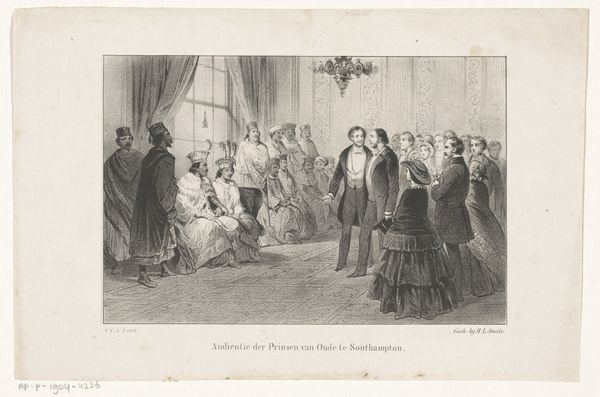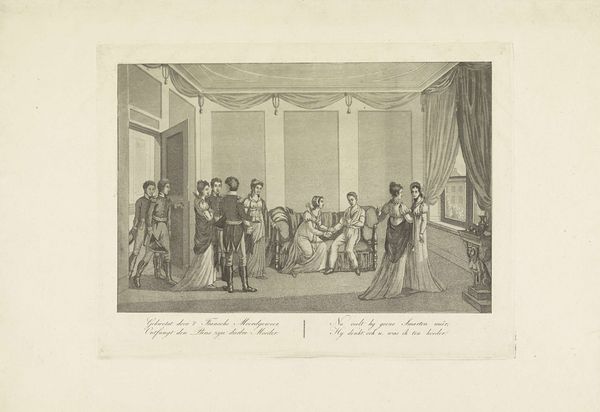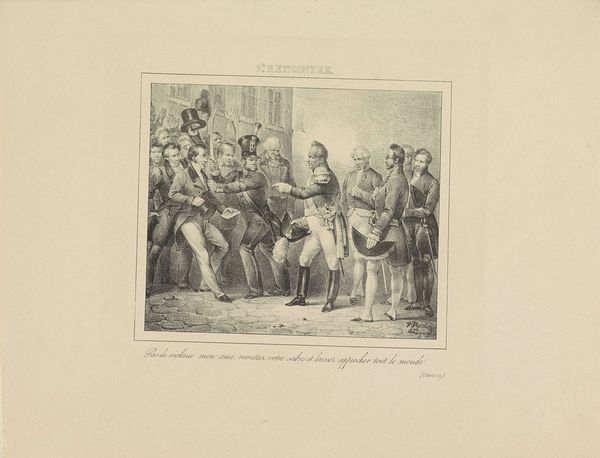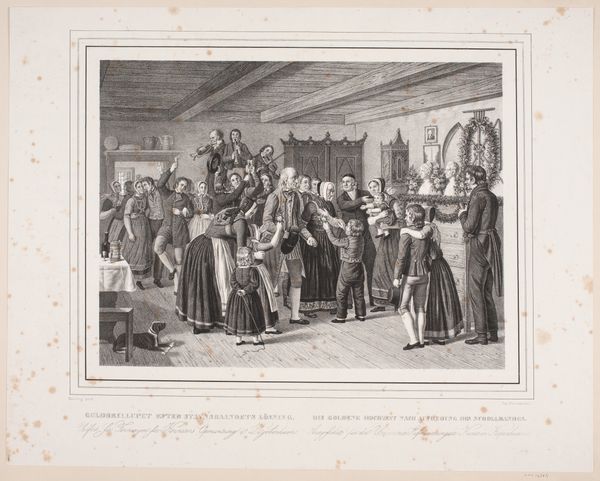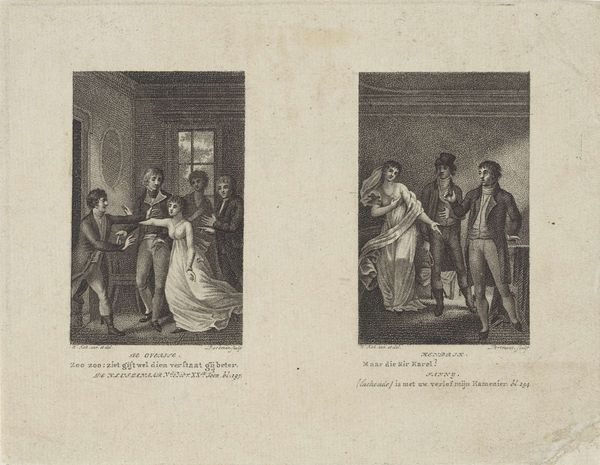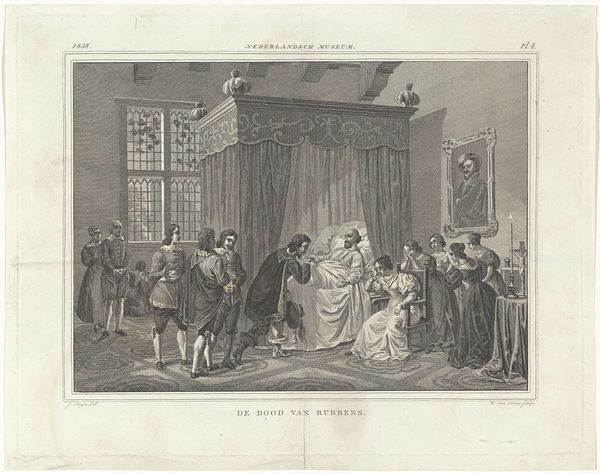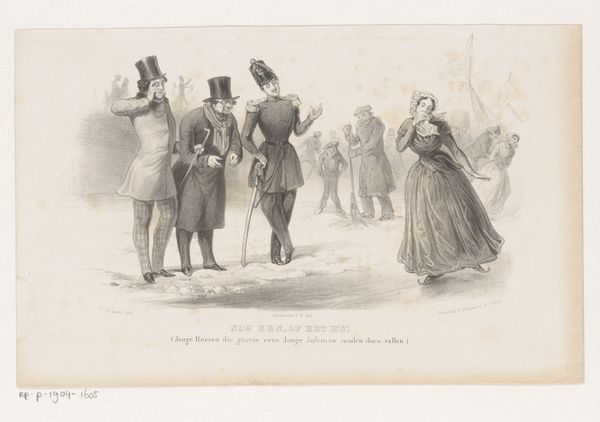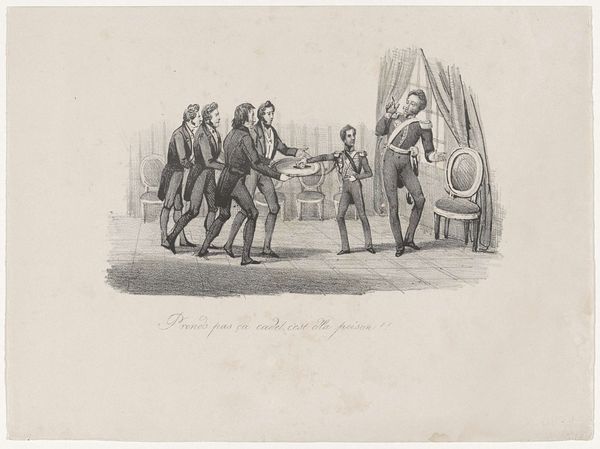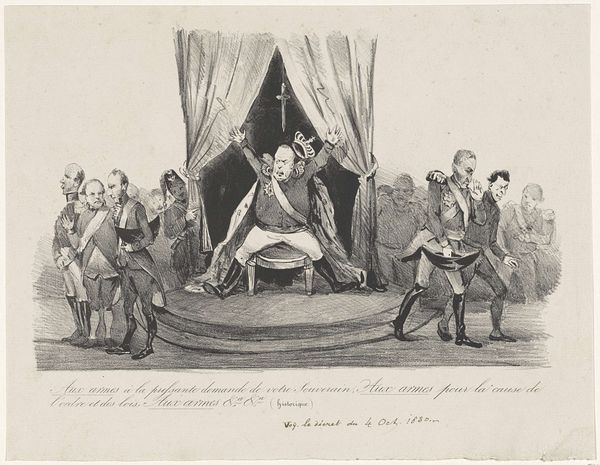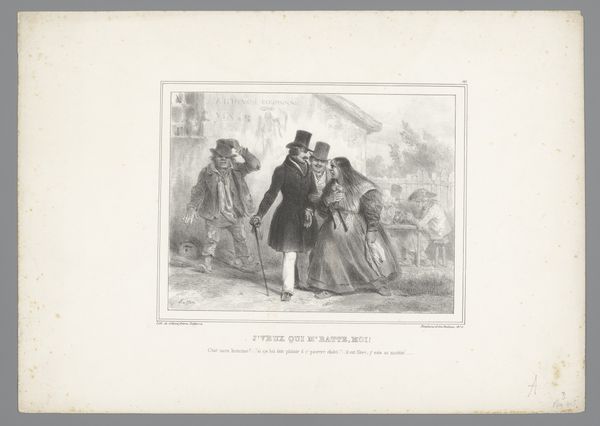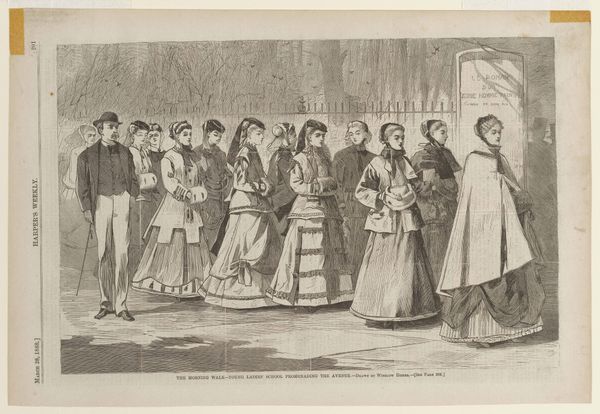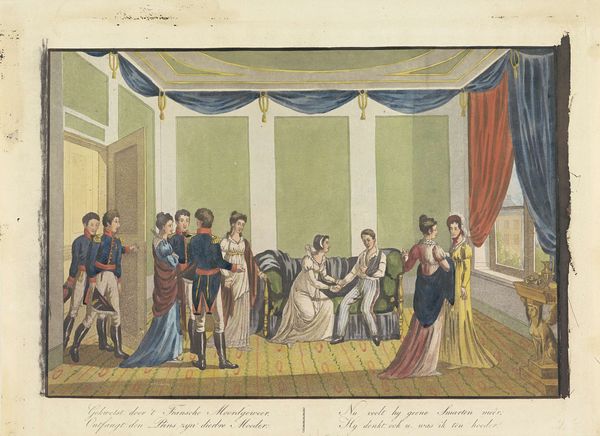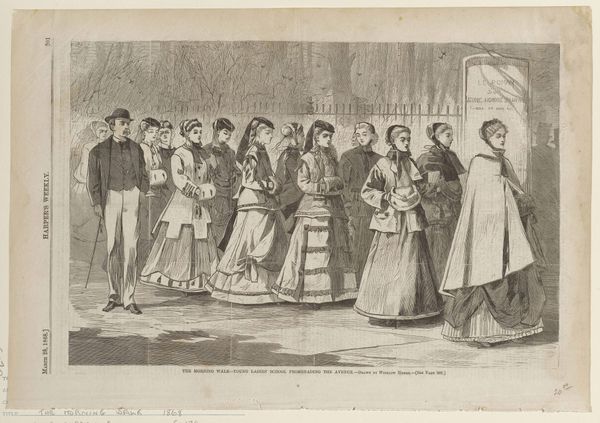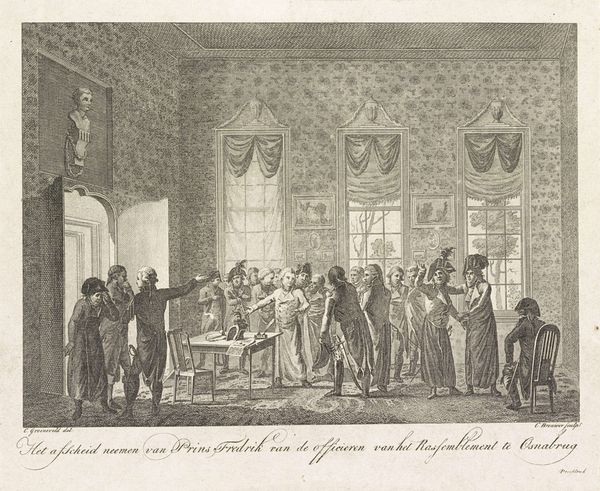
Dimensions: height 164 mm, width 238 mm
Copyright: Rijks Museum: Open Domain
Petrus Franciscus Greive made this print titled 'Arrival of Anna Paulowna' in 1816. It shows Anna Paulowna Romanov, a member of the Russian Imperial family, arriving in the Netherlands to marry the future King Willem II. The print serves as a record and celebration of a dynastic union. In the context of the early 19th century, these unions were critical for establishing political alliances and securing national interests. The composition emphasizes the formal exchange between the Dutch and Russian representatives, highlighting the joining of two powerful European families. Consider how specific features of that culture, such as geography, religion, historical events, social class, political movements, or economic structures might have influenced the artwork. Also mention any relevant institutional histories. Does the artwork comment on the social structures of its own time? Is it self-consciously conservative or progressive? Does it critique the institutions of art? Understanding this work fully requires an appreciation of European royal history, Dutch-Russian relations, and the visual language of power in the 19th century.
Comments
No comments
Be the first to comment and join the conversation on the ultimate creative platform.
